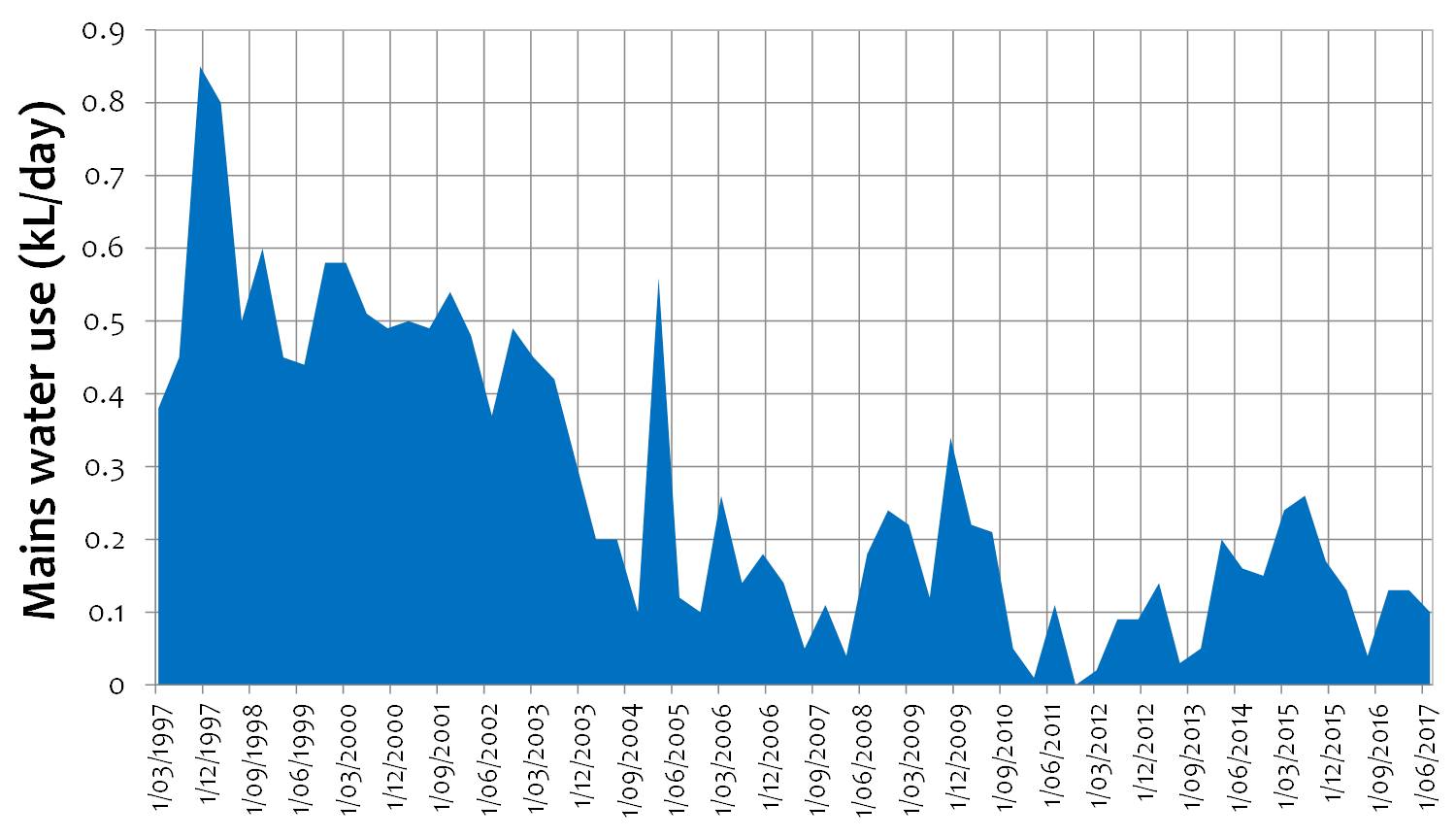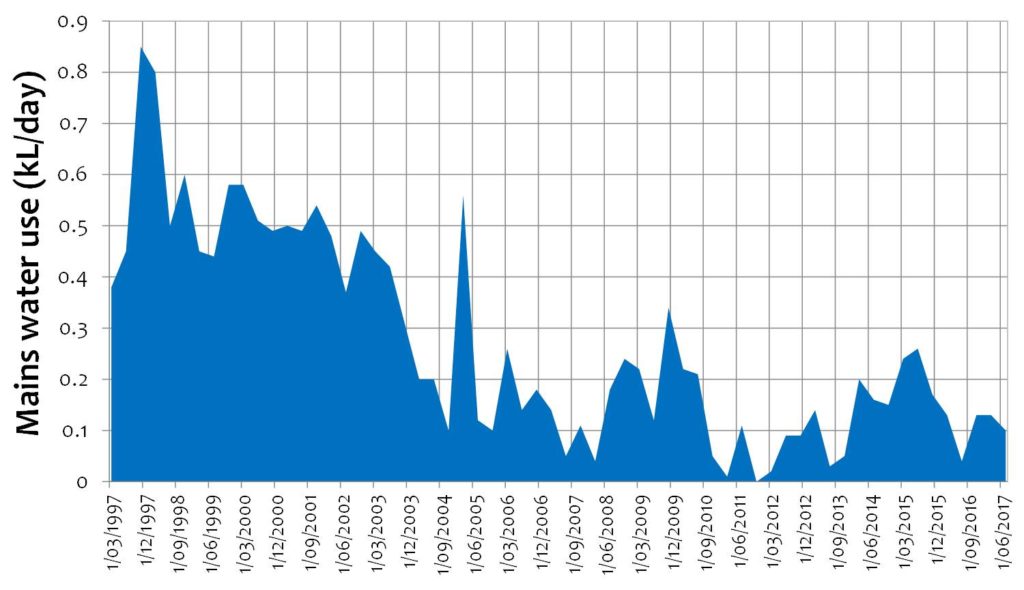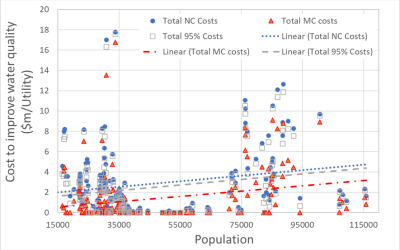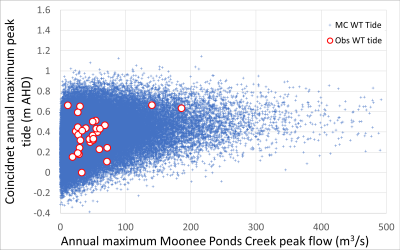History of sustainable house water and energy monitoring – rainwater harvesting to solar battery storage
Presentation by Peter J Coombes at WSUD 2018 & Hydropolis 2018 at 14:00 on Tuesday 13 February 2018, at Crown Towers Perth Western Australia.
This paper provides a narrative of insights and experience derived from two decades of monitoring of a sustainable house in the inner city suburb of Carrington in New South Wales. Water efficient appliances, rainwater harvesting, solar panels and battery storage reduced demands for grid water and energy, and provided resources to the grid. Use of rainwater harvesting and edible rain gardens reduced stormwater runoff from the property which has potential impacts to mitigate flooding and improve waterway health.
It was a key insight that the house operates as a system with feedback loops rather than the sum of performances from each household appliance, water saving measures and human behaviour. These insights revealed a need to calibrate household behaviours and sustainable systems for optimum performance. The sustainable measures reduced household expenditure on utility bills by $2,126/annum by reducing water ($321) and energy ($1,618) bills, and earning payments for solar energy ($187) exported to the grid. These results demonstrated substantial benefits to householders derived from sustainable housing.
The average mains water use reduced from 0.52 kL/day prior 2003 to 0.14 kL/day after 2012. This represents a 74% annual reduction in mains water use. This is an annual average saving of 139 kL and a cumulative saving of 2,820 kL since 2003. Average daily use of grid energy was 18.5 kWh prior to 2003 and 4.7 kWh during 2017. This represents a 74% reduction in annual demand for grid energy (5037 kWh). The average daily export of solar energy to the grid was 4.1 kWh after 2012. The use of grid energy decreased by 8% to 17 kWh/day during the period 2003 to 2012 following installation of the rainwater harvesting system, air conditioner, clothes dryer and water efficient clothes washer. This result was different to the conventional assumption that installation of rainwater harvesting systems increase household energy use.
These results demonstrate that small inner city properties can also make significant contributions to widespread sustainable outcomes in cities.







